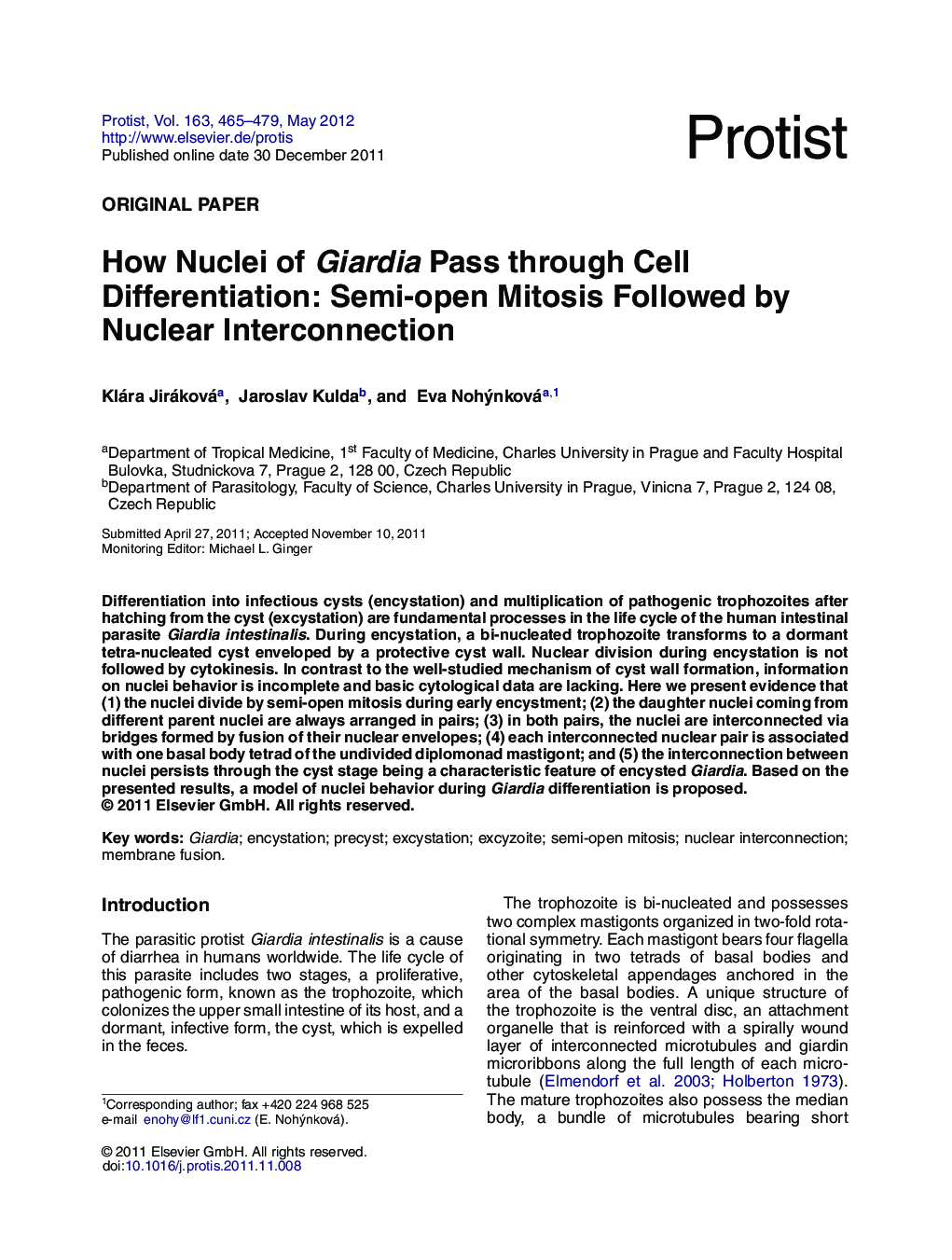| Article ID | Journal | Published Year | Pages | File Type |
|---|---|---|---|---|
| 2061803 | Protist | 2012 | 15 Pages |
Differentiation into infectious cysts (encystation) and multiplication of pathogenic trophozoites after hatching from the cyst (excystation) are fundamental processes in the life cycle of the human intestinal parasite Giardia intestinalis. During encystation, a bi-nucleated trophozoite transforms to a dormant tetra-nucleated cyst enveloped by a protective cyst wall. Nuclear division during encystation is not followed by cytokinesis. In contrast to the well-studied mechanism of cyst wall formation, information on nuclei behavior is incomplete and basic cytological data are lacking. Here we present evidence that (1) the nuclei divide by semi-open mitosis during early encystment; (2) the daughter nuclei coming from different parent nuclei are always arranged in pairs; (3) in both pairs, the nuclei are interconnected via bridges formed by fusion of their nuclear envelopes; (4) each interconnected nuclear pair is associated with one basal body tetrad of the undivided diplomonad mastigont; and (5) the interconnection between nuclei persists through the cyst stage being a characteristic feature of encysted Giardia. Based on the presented results, a model of nuclei behavior during Giardia differentiation is proposed.
